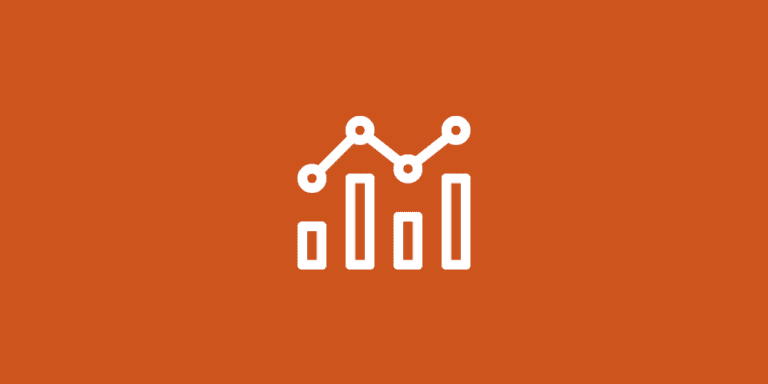6 Keys in What is Automation Workflow for Success

Imagine being stuck in a never-ending cycle of manual processes, with tasks that feel like they’re sapping the life out of your team. It feels daunting, right? What if you could break free from that cycle and step into a world where these tasks are seamlessly taken care of, leaving you to focus on what truly matters for your business?
Welcome to the world of workflow automation, a game-changer that is turning the tide for businesses around the globe. Buckle up as we go deep into automated workflows, shedding light on “what is automation workflow,” its mechanisms, real-world applications, and how you can create your automated workflows.
Key Takeaways
- Workflow automation enables businesses to streamline processes and save time by automating manual tasks.
- Automated workflows involve if/then statements to balance static and dynamic elements, resulting in increased productivity, reduced errors, and improved customer satisfaction & compliance.
- When selecting workflow automation tools, it is important to consider features, scalability & integration capabilities for successful outcomes.
Demystifying Workflow Automation

The transformative potential of marketing workflow automation is truly marvelous. It’s like having a super-powered assistant who never tires, working diligently to automate tasks and streamlining the many cogs in your business machine. Imagine the time saved by replacing manual data entry with automated tasks or the boost in productivity as your team is freed from time-consuming manual tasks. Workflow automation is your ticket to a streamlined business workflow, with rule-based logic and triggers acting as your conductors.
However, that’s just scratching the surface. It’s time to explore the intricacies of this remarkable technology.
A Brief Overview of Workflow Automation
Workflow automation can be likened to a skilled orchestra conductor expertly guiding the symphony of tasks within a business process. At its core, workflow automation means using software to automate tasks, significantly decreasing manual labor and optimizing efficiency. It is akin to replacing a group of amateur musicians with a well-oiled, professional musical ensemble. What is the harmonious result of implementing a workflow automation process? A symphony of streamlined operations and improved customer experience.
For instance, businesses can use tools like Nintex or Flokzu to automate spreadsheet handling rather than doing it manually. Like a conductor bringing out the best in each musician, these tools bring out the best in your business processes.
The Mechanisms Behind Automated Workflows
To fully understand the intricacies of automated workflows, it is necessary to look behind the scenes at how they function. Imagine your favorite song. It’s not just a random collection of notes. It follows a specific structure or pattern, much like workflow automation’s if/then statements. These statements serve as the rules or ‘sheet music’ that guide the performance, initiating a new task or process when certain conditions are met.
Furthermore, automated workflows can be either static, following a precise sequence like a well-rehearsed symphony, or dynamic, like a jazz ensemble, improvising based on the ‘mood’ or conditions at runtime. This combination of triggers and actions works in harmony to create a powerful, efficient performance, or in this case, a streamlined, efficient workflow. To automate workflows, it’s essential to understand the balance between static and dynamic elements, and looking at workflow automation examples can be helpful in this regard.
Key Components of Workflow Automation Software
Choosing the right software is akin to selecting a finely crafted instrument, both being crucial for creating beautiful music. The key components of workflow automation software are akin to this instrument, with features like:
- low-code capabilities
- custom workflows
- multi-step approval processes
- integration with other tools
These features play together in harmony, each contributing to a seamless performance.
Moreover, like an instrument, good software should be scalable and handle more complex pieces as your skills grow. Finally, a good instrument should be user-friendly, just like good software should be easy to use and integrate with existing systems. So when choosing your ‘instrument’, consider workflow automation software that ticks all these boxes.
The Impact of Automating Your Business Workflow

In the grand orchestra of your business, each department is like a section of instruments, each playing its part in the overall performance. Imagine if these sections could play their parts more efficiently, with fewer mistakes, and in perfect harmony. That’s the magic of automated workflows. They weave a symphony of productivity, error reduction, and enhanced customer satisfaction across your business.
It’s time to dissect these ‘movements’ for a better understanding.
Boosting Productivity Across Departments
Starting with the first movement boosts productivity. Workflow automation acts like a metronome, setting the pace for each section of your business orchestra and ensuring no beat is missed. Automating repetitive tasks like data entry or email processing allows your team to focus on their symphony’s more challenging, creative parts, like crafting strategies or building relationships. This results in a performance that’s not just faster but also more harmonious and efficient. After all, why waste your virtuoso violinist’s skills on a simple drum beat?
Reducing Errors and Improving Compliance
Moving on to the second movement, reducing errors and improving compliance. Just as a conductor ensures each musician plays the right notes at the right time, automated workflows ensure each task is executed accurately and consistently, reducing the chances of ‘off-key’ errors.
From maintaining uniformity in your performance to speeding up approvals and enhancing transparency, workflow automation hits all the right notes. And just like a well-rehearsed orchestra stays in harmony, an automated business stays compliant, hitting all the regulatory notes.
Enhancing Customer Satisfaction
The final movement in this symphony is enhancing customer satisfaction. Just like an audience enjoys a seamless and well-orchestrated performance, customers appreciate streamlined processes that offer quick and efficient service. By reducing delays and providing personalized communication, workflow automation ensures your business hits all the right notes to keep your audience and customers applauding for more.
Whether it’s faster service, personalized communication, or improved feedback, the melody of customer satisfaction resonates long after the performance ends.
Real-World Applications: Workflow Automation Use Cases

Having explored the theory of workflow automation, it’s time to apply it in practice. Just like a live performance enhances a music theory class, so is understanding workflow automation enhanced by exploring real-world applications.
Whether it’s hitting the high notes in marketing, keeping the rhythm in human resources, or maintaining the tempo in financial processes, workflow automation plays a role in every section of your business orchestra.
Marketing Automation Tools at Work
In the marketing section of our business orchestra, the melody of effective communication plays a key role. Automated workflows can act as the conductor, orchestrating tasks like email campaigns and social media management into a harmonious symphony of customer engagement. Think of it as replacing a manual piano with a sophisticated synthesizer, allowing you to create complex, captivating melodies easily. And with tools like Sender, the potential for creating beautiful marketing music is virtually limitless.
Human Resources Simplified with Automation
The rhythm section of our business orchestra, Human Resources, plays a vital role in keeping everyone in sync. Automated workflows streamline the rhythm of HR processes, conducting the tempo from applicant tracking to onboarding.
Imagine if the drum section of your orchestra could keep perfect time without a drummer, freeing them up to add depth and complexity to your performance. That’s what automation can do for your HR team, allowing them to focus on what truly matters – your people.
Financial Processes Made Easy
Finally, in the financial section, automated workflows play the role of a meticulous accountant, ensuring every note and dollar is accounted for. From the tempo of invoicing to the rhythm of expense approvals, automation conducts a flawless financial performance. Just as a skilled pianist uses a metronome to maintain a steady tempo, automation ensures the steady flow of your financial processes.
And with tools like Nintex, you have a grand piano at your disposal, offering a range of keys to hit all the right financial notes.
Creating Your Own Automated Workflows

Having examined the power of workflow automation, its practical applications, and departmental impacts, it’s your turn to be in the spotlight. Just like a conductor prepares their orchestra for a performance, you, too, can prepare your business for a seamless performance with automated workflows.
By identifying repetitive tasks, selecting the right tools, and deploying and optimizing your workflows, you can conduct your business to a standing ovation.
Identifying Repetitive Manual Tasks
The first step to conducting your business symphony is identifying your workflow’s repetitive manual tasks and manual processes. These are the off-key notes in your performance, the tedious drum beats that a machine could handle. Whether it’s data entry, email processing, or generating reports, these tasks can be automated to save time and increase efficiency.
You wouldn’t waste a virtuoso violinist’s skills on a simple drum beat, so why waste your employees’ skills on tasks that can be automated?
Selecting the Right Workflow Automation Tools
Once you’ve identified the tasks that can be automated, it’s time to select your instruments – the right workflow automation tools. Just as you wouldn’t play a violin with a drumstick, you need to ensure your tools are fit for purpose. Consider the features, scalability, and integration capabilities of each tool.
Whether you choose a versatile instrument like Microsoft Power Automate or a specialized tool like HubSpot Service Hub, make sure it can play the right notes for your business symphony.
Deploying and Optimizing Your Workflows
With your orchestra assembled and your instruments selected, it’s time to conduct your first performance. Deploy your workflows, but remember, a good conductor doesn’t just set the tempo; they listen, adapt, and optimize. It’s the same with deploying automated workflows.
Monitor their performance, adapt as needed, and continuously optimize to ensure you always hit the right notes. With the right tools and patience, you’ll soon be conducting a business symphony that’s music to your ears.
Overcoming Common Challenges in Workflow Automation

Like any symphony, obstacles can appear along the way. However, like the conductor who turns a wrong note into a spontaneous jazz riff, these challenges can be opportunities. Balancing automation with human input, ensuring smooth integration, and preparing your team for change are the crescendos and decrescendos of the workflow automation symphony.
It’s worth exploring how to surmount these challenges and maintain harmony within our business orchestra.
Balancing Automation with Human Input
Our first challenge is finding the right balance between automation and human input. Just as a symphony needs the human touch of musicians to bring the music to life, so does your business need the human touch to bring creativity and critical thinking to your workflows. While automation can handle the repetitive beats, the melody of decision-making and problem-solving often requires the human touch.
Therefore, it’s essential to strike the right balance, letting each part of your orchestra play to its strengths.
Ensuring Smooth Integration with Existing Systems
Our next challenge is ensuring smooth integration with existing systems. Just as a new musician needs to fit in with the rest of the orchestra, your workflow automation tools must integrate seamlessly with your existing systems. This can be achieved through careful planning, testing, and selecting tools compatible with your existing systems.
With careful orchestration, you can ensure your new and existing tools play together in perfect harmony.
Preparing Your Team for Change
Our final challenge is preparing your team for change. Just as a conductor guides their orchestra through new compositions, so should you guide your team through the transition to automated workflows. This means providing the necessary training and support, setting clear expectations, and fostering an environment that embraces change.
With the right leadership, your team will play their new symphony with confidence and skill in no time.
Choosing the Best Workflow Automation Software for Your Needs
Just as a maestro selects the right orchestra for their performance, selecting the right workflow automation software for your business is crucial. This means evaluating:
- Features
- Scalability
- User-friendliness
- Support
- Pricing
- Return on investment
In the subsequent sections, we’ll examine these considerations, assisting you in choosing the best ensemble for your business symphony.
Evaluating Features and Scalability
The first step in choosing the right software is evaluating its features and scalability. Just as a conductor wouldn’t choose an orchestra that can only play one genre of music, you shouldn’t choose software that can only handle one type of task. Look for software that offers a range of features to handle all your business needs.
Additionally, consider the software’s scalability. Can it grow with your business? Can it handle increased workloads as your business expands? Just as a conductor needs a flexible orchestra, you need a flexible software.
Considering User-Friendliness and Support
The next step is considering user-friendliness and support. Just as a conductor wouldn’t choose an orchestra full of difficult personalities, you shouldn’t choose software that’s difficult to use. Look for software that’s intuitive and user-friendly.
Additionally, consider the support offered by the software provider. Just as a conductor needs support from their musicians, you need support from your software provider.
Reviewing Pricing and Return on Investment
Finally, you’ll need to consider pricing and return on investment. Just as a conductor wouldn’t hire an orchestra without considering the cost and the potential ticket sales, you shouldn’t choose software without considering the cost and potential return on investment.
Look for software that provides good value for money and consider how the software can help improve your business processes and bottom line.
Advantages and Limitations of Workflow Automation
Like a symphony with its crescendos and decrescendos, workflow automation also has its own pros and cons. It offers multiple benefits, such as increased productivity, reduced errors, and enhanced customer satisfaction. However, not all tasks are amenable to automation, and the initial setup could be time-consuming and necessitate technical expertise. Let’s delve into these highs and lows in more detail.
Exploring the Advantages
On the upside, workflow automation can be like the crescendo of your business symphony, elevating your performance to new heights. By automating repetitive tasks, workflow automation allows your team to focus on high-value tasks, boosting productivity. It also reduces errors and improves compliance by ensuring tasks are executed consistently and accurately. Moreover, it helps to automate manual processes, further streamlining your operations and enhancing your workflow automation efforts.
But perhaps the most harmonious note is the improved customer satisfaction that comes with the ability to streamline workflows, resulting in reduced delays and streamlined processes. It’s like the applause at the end of a well-performed symphony, a testament to the power of workflow automation.
Acknowledging the Limitations
However, like the decrescendo in a symphony, there are also some limitations to acknowledge. Not all tasks are suitable for automation. Tasks that require creativity, problem-solving, or a distinctly human touch are often best left to the human members of your orchestra.
Additionally, the initial workflow automation setup can be time-consuming and require technical expertise, like tuning an orchestra before a performance. But with careful planning and the right tools, these challenges can be overcome, and your symphony can hit all the right notes.
Summary
We’ve navigated the composition of workflow automation, from the basic notes of what it is and how it works to the complex harmonies of real-world applications, creating your workflows, and overcoming challenges. We’ve explored the crescendos of its advantages and acknowledged the decrescendos of its limitations. Just as a conductor brings a symphony to life, workflow automation brings your business a new level of efficiency and productivity. So pick up your baton, step onto the podium, and let the music of workflow automation guide your business to success.


